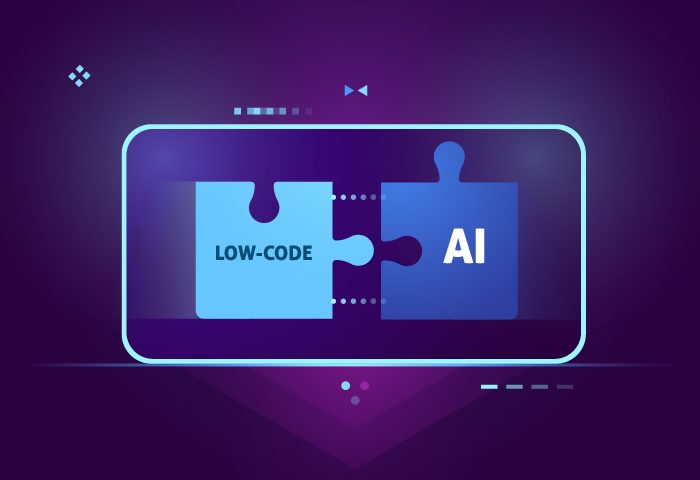
The rise of low-code and no-code platforms has been one of the most disruptive trends in tech over the past few years. In 2025, it’s no longer just startups or non-technical founders using these tools — enterprises, governments, and even dev teams themselves are embracing low-code to accelerate delivery.
But as adoption grows, one question keeps popping up:
Should traditional developers be worried?
Let’s unpack what’s really happening — and what this shift means for engineers, engineering managers, and the future of software itself.
🚀 What’s Fueling the Low-Code Boom?
Low-code platforms like Retool, OutSystems, Bubble, Appsmith, and enterprise players like Microsoft Power Apps are now mainstream.
Why they’re taking off:
- Speed: Drag-and-drop interfaces and pre-built integrations reduce development time dramatically.
- Business alignment: Non-technical teams can prototype and ship internal tools without waiting for dev cycles.
- AI integration: Tools like OpenAI’s GPT APIs, Make.com, and Zapier AI let users automate workflows, generate code, and build chatbots without writing much code.
- Developer shortage: There simply aren’t enough engineers to meet the global demand for software — especially for internal tools, dashboards, and CRUD-heavy apps.
Low-code isn’t replacing all software — but it’s taking over the boring, repetitive parts.
👨💻 What Traditional Devs Still Do Best

Let’s be clear: low-code platforms excel at certain kinds of problems — mostly predictable, UI-heavy, data-driven applications.
But they fall short when it comes to:
| Area | Why Low-Code Struggles |
|---|---|
| Complex logic | Hard to express nuanced business rules visually |
| Performance optimization | Limited control over runtime, caching, tuning |
| Scalability & architecture | Not designed for massive scale or microservices |
| Custom algorithms | Advanced computation or ML needs real code |
| Security & compliance | Regulated industries often need more transparency and control |
In short: low-code is complementary, not competitive — at least for now.
🧩 Low-Code Isn’t the Threat — It’s the Shift in Expectations
Here’s the real twist: the threat isn’t that low-code will replace developers.
It’s that your stakeholders will expect you to move faster, automate more, and justify hand-written code.
This means:
- You might be asked why your team is spending 6 weeks building an admin dashboard instead of spinning it up in Retool.
- Product managers will come with Bubble prototypes and expect them to be “productionized” in days.
- You’ll need to integrate with low-code tools in your backend — not just write code, but enable others to build around your APIs.
Traditional devs aren’t being replaced — but their roles are being redefined.
🧠 AI + Low-Code = Even Less Friction

The rise of AI-assisted development has turned low-code into something more powerful: prompt-to-app.
Platforms like:
- Glide AI
- Pinecone + LangChain dashboards
- Zapier AI Agents
- GPT-4 integrated Retool actions
…are letting non-engineers describe what they want and generate functioning apps, workflows, or integrations within minutes.
For developers, this creates leverage — but also pressure. If a marketer can spin up a lead-gen dashboard in 15 minutes, what’s your competitive edge?
👷 How Developers Can Stay Ahead (And Thrive)
Instead of worrying about low-code, smart developers are asking:
“How do I make low-code tools work for me?”
Here’s how to turn the trend into a career advantage:
1. Own the Backend
Most low-code apps need a real backend: APIs, auth systems, business logic, security layers, data stores.
Be the person who builds and maintains those systems — and empower other teams to safely build on top of them.
2. Shift Left into Architecture & Integration
Low-code apps often need to talk to multiple services.
Become the expert in:
- API design & integration
- Event-driven architecture
- Auth, permissions, and role-based access control
- Webhooks and automation interfaces
You’ll be the bridge between platforms — and that’s indispensable.
3. Automate Your Boring Work
Use low-code internally. Automate deployments, build dashboards, create internal tools without code.
If you can automate your own workflows, you increase output and reduce burnout.
4. Lead Governance and Guardrails
Be the voice that helps your company use low-code safely and scalably:
- Data privacy
- Security reviews
- API rate limiting
- Audit trails
In a world of AI-generated tools, trust and reliability are your job.
🧠 Pro Dev Tip: Learn to Pair with Low-Code

In 2025, a powerful developer isn’t someone who just writes perfect code — it’s someone who can:
- Build core services in Go or Rust
- Design APIs in OpenAPI
- Expose those APIs to a Retool or Make.com interface
- Teach non-dev teams how to extend workflows without touching code
That’s not just technical skill — it’s technical leadership.
🛠️ Real Use Cases Where Devs + Low-Code Win
Here’s where the combo of traditional coding and low-code really shines:
| Scenario | Traditional Dev Role | Low-Code Use |
|---|---|---|
| Internal admin panel | Build backend services & auth | Retool or Appsmith UI |
| Customer support tools | Build webhooks & integrations | Zapier or Make.com workflows |
| Rapid MVP | Expose data & logic via APIs | Bubble or Glide as front end |
| AI chat interfaces | Build custom agents/functions | Use Botpress or LangChain UIs |
| CRM/Marketing tools | Integrate data pipelines | Low-code for reporting/automation |
⚖️ Should Devs Be Worried?
Not really — but they should be adapting.
Low-code is not the end of coding. It’s the beginning of a new division of labor in software development:
- Developers focus on logic, architecture, and scalability.
- Business teams build UIs, dashboards, and workflows on top.
- AI bridges the gap with smart scaffolding and context-aware tooling.
The demand for great engineers isn’t going away. But the definition of “developer” is expanding, and standing still could mean getting left behind.
🔮 Final Thoughts: Code Less, Build More
The shift toward low-code is not a threat to developers — it’s an opportunity to let go of repetitive work, focus on higher-leverage tasks, and become a multiplier for your company.
The developers who will thrive in 2025 and beyond won’t just write code. They’ll:
- Build foundational services
- Architect ecosystems others can build on
- Guide teams in using the right tools for the job
- Use AI + automation as force multipliers
It’s not about coding less.
It’s about building more with less code.




